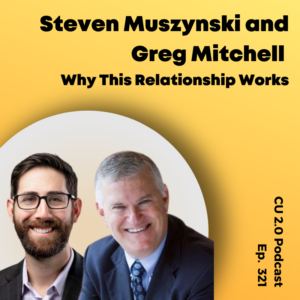How many marketing emails can you send each month? As you can probably imagine, the answer depends on a few variables. However, you might be surprised by just how much you can get away with.
The general fear that brands (and many marketers) have is that more emails = more spam. But that’s not necessarily the case! In this blog, we’ll cover how many emails you can safely send to your list before people start unsubscribing.
Variables Affecting Send Frequency
There are a few things that affect how many emails you can send per month. Remember that while these variables influence how often you can send emails, they won’t give you any hard and fast rules. Rather, they’ll just indicate whether you can get away with sending more or if you should hold back and send less.
B2B vs B2C: Generally speaking, B2B institutions should send fewer emails than B2C companies. So, credit unions should send more marketing emails; credit union vendors and fintechs should send less.
Offers and promotions: If you’re promoting an offer that has an expiration date, you should send extra emails about it.
Cold vs subscribed lists: More people trust and engage with email content that they’ve subscribed to or opted into. You have their explicit agreement to send marketing messages. But bombarding cold lists strays into “spam” territory way faster.
Targeted vs blanket sends: Sending different emails to different segments can help. For example, credit unions will see better engagement on a high yield savings account offer if they send it to engaged, high-earning members. Including members who have less than $100 in their checking accounts will definitely affect sending stats—and might trigger unsubscribes because the material isn’t relevant.
Sending Too Many Emails
Sending too many emails is an issue. In fact, 69% of unsubscribes are a result of sending too many emails.
But “too many” is a subjective amount. There’s no magic number of emails to send per month (or week). The same study shows that “too many” often means a single email per month…
And that companies who send emails daily often have lower unsubscribe rates overall.
This suggests that people are more likely to unsubscribe because they don’t want any marketing emails from a company. The frequency matters less than the sender, essentially.
How Many Marketing Emails Can You Send?
This is where we admit that we don’t have a recommended number of emails to send each month. Most companies send only two or three emails per month. Many send only one.
On the other hand, I’ve seen B2C companies send a daily marketing email to great success. Many of our B2B clients send two or three emails per week.
We have seen no appreciable difference in unsubscribes when comparing frequent vs infrequent email sends. Ultimately, if the subject matter is timely and relevant, you’re safe to send far more frequently than you’d expect!
The real question about how many emails you can send is this:
Are you exclusive or are you inclusive?
That is, do you want to send infrequent emails to increase their scarcity? If recipients know that you pack a lot of value into a single email—and that you’ll do it only a few times per month—they’ll be more likely to open and click through.
Or do you want to make sure people don’t miss your emails? If recipients get a ton of emails daily, they may miss or forget about your messages without getting a chance to follow up.
We’ve noticed that if we send the same email twice—just days or a week apart—we get just about the same open and click-through rates on the second that we did on the first… even when we send the second email only to people who didn’t click through the first one.
Based on the above, we suggest sending slightly more emails than your instincts tell you to send. Some people will miss your emails the first time. A second send will nearly double your overall click-through rate. And people won’t even consider it spam!
Additional Reading
Email marketing for credit unions and fintechs is still very effective. And, if done correctly, it can be an exciting, engaging puzzle. For example, you can increase your email frequency if you include nurturing sequences into your marketing strategy.
We see better engagement and conversion when we use marketing automation. Read more about marketing automation and email marketing for credit unions and fintechs below.
What Credit Union Marketing Automation Is and Why It Matters




